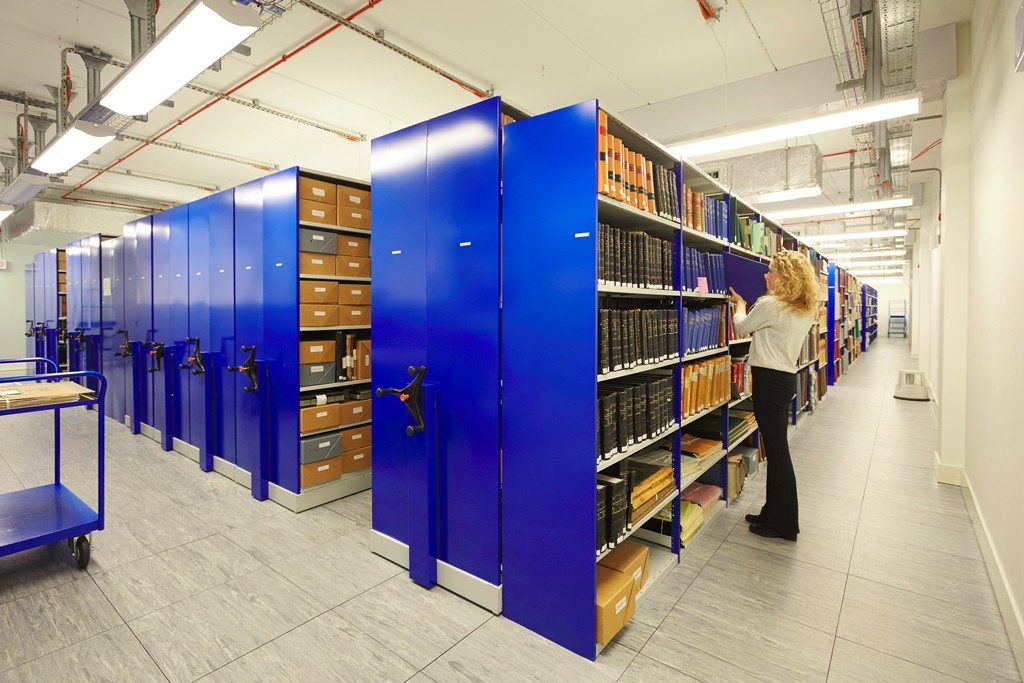The causes of deterioration of archives and guidance for storage
The High Life Highland Conservation Service has air conditioned repositories providing the ideal conditions for long term storage preservation, with mobile shelving access meeting B.S.5454:2000 (P.D.5454-2012).
The material in the archive collection holdings are mainly organic, such as paper, parchment, leather, photographic supports and emulsions, book structures and associated covering materials such as leather, cloth and parchment. The museum collections, range from paper, wood, oil paintings and porcelain. These materials fluctuate with slight differentials in temperature or relative humidity; the materials can be as varied as the collections themselves. The diversity and fragility of materials require specialised storage preservation solutions and careful considerations during handling and transportation; whether inside the building or being transported to a new site.
The main cause of damage is caused by frequent or careless handling (mechanical damage). Other factors are bad storage environments, for example a damp environment will encourage mould and insects, add heat into the equation will facilitate insects to have one, two or three breeding cycles a year. All materials are damaged by light, particularly ultra violet light; paper which has lignin such as poor quality papers like newsprint become brittle, discolour and degrade quickly if exposed to heat and light. Photograph emulsion will be on a support of glass, plastic, paper or metal, which all require special care. The emulsions are absorbent and delicate which must be handled with extreme caution.
Environment
For the safe storage of infrequently handled material is a constant temperature within the range of 16 – 19º C with a tolerance of +-1ºC and relative humidity (rh) (moisture content in the air) of between 45-60%rh with a tolerance of +-5%rh is recommended over a 24 hour period.
In practical terms this means finding a cool dry place. In most homes particularly modern houses, a cool dry place will mean a bedroom, spare room or dining room which has only background heating most of the time. Cellars are almost always damp and roof spaces will be subject to extremes of temperature and humidity according to the season.
High or low RH and temperature are damaging in many ways. High RH and temperature will support the growth of mould, micro biological activity and the development of acidity. Conversely, low RH will result in the drying out and embrittlement of the cellulose fibres within paper.
Constancy in storage conditions is essential as fluctuations in temperature and RH are damaging to materials. The goal is to maintain a stable and consistent environment and to avoid extremes.
All items should be kept out of direct sunlight. If items must be displayed then ultra violet filters will help to reduce damage; these can be fitted to windows and lights. Curtains and blinds will also help to reduce exposure.

